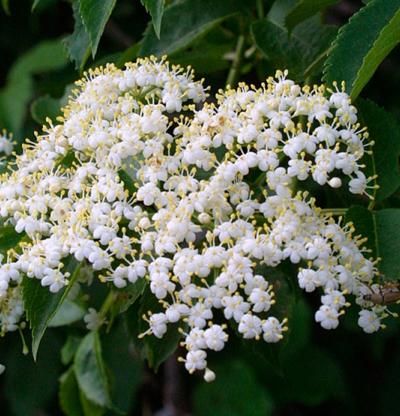





 American elder (Sambucus canadensis)
sam-BOO-kus kan-ah-DEN-sis
Genus:
Sambucus
American elder (Sambucus canadensis)
sam-BOO-kus kan-ah-DEN-sis
Genus:
Sambucus
A familiar native shrub, American elderberry is commonly seen along streambanks and roadsides and in moist woodlands and thickets throughout eastern North America. It has pinnate leaves with toothed leaflets and small white flowers borne in large flattened clusters in summer. Purple-black, round fruit comes next, attracting wildlife to the garden. Elderberries typically grow to about 12 feet high, but they tolerate pruning to a smaller size. Fruit is edible when cooked.
Noteworthy Characteristics:Elderberry is native to eastern North America. It's a good wildlife plan, with its numerous white flowers in summer and purple-black berries in late summer and fall. All parts of the plant can cause severe discomfort if eaten, but fruit is safe when cooked.
Care:Grow in average, medium to wet, humusy soil in full sun to part shade. Prune out dead or weakened stems in early spring. Can be hard pruned if needed to restrict size.
Propagation:Sow seed in containers in autumn in an open frame. Take hardwood cuttings in winter or greenwood cuttings in early summer. Colonizes by root suckers.
Problems:Powdery mildew, canker and dieback, rust, virus diseases, fungal leaf spots, borers.
Copyright © www.100flowers.win Botanic Garden All Rights Reserved